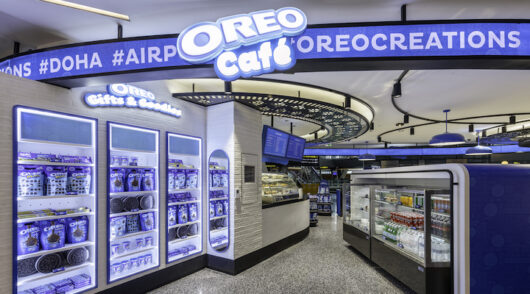Retail media is estimated to be a $180 billion global opportunity, according to the World Advertising Research Center. It is often described as advertising’s third big wave after search and social ads, and has been adopted by some of the world’s biggest retailers.
Understanding the benefits of retail media – whether you’re a retailer, brand, agency or partner – is vital to capturing the opportunities in this fast-growing space.
In a recent webinar, Zitcha co-founder and CEO Troy Townsend and The Warehouse Group chief customer and sales officer Jonathan Waecker unpacked the key opportunities in retail media, and offered advice on how businesses can make the most of their investment in this space.
Here are three key takeaways from the webinar, or you can watch the full discussion on-demand here.
- What is retail media, and why is it a big opportunity now?
Simply put, retail media gives retailers the ability to place ads for brands and merchants across their own channels, such as their e-commerce site and stores, as well as external channels, including Google and TikTok.
“The real beauty of retail media is that not only are you buying surface, but you’re also buying transaction, so it’s a closed-loop attribution model for brands to be able to make sure that for every dollar they’re spending on media, they’re getting a return on those media dollars,” Townsend said.
While the concept of retail media has been around for many years, the rise of e-commerce during the pandemic has led to the rapid expansion of the industry.
“Retailers are starting to work out, ‘Well, I’m actually sitting on quite a large amount of consumer data and I’m also sitting on a lot of transaction value from people using my e-comm to be able to purchase and transact,” Townsend said.
Besides the increase in online shopping, changes around privacy legislation and publishers’ ability to use third-party data are also driving the growth of retail media.
- What are the benefits to brands and retailers?
From a retailer perspective, Amazon has long been the leader in the retail media space, but others are starting to catch up, including Walmart in the US, Coles and Woolworths in Australia and The Warehouse Group in New Zealand.
At The Warehouse Group, Waecker sees two main use cases for retail media: highly considered categories, such as consumer electronics, where it’s important for brands to build awareness across multiple touch points prior to purchase, and fast-moving consumer goods categories, where it’s important for brands to show up in the moment of consideration, usually by appearing closer to the shelf-edge.
“In the classic world, that was everything from shelf-wobblers to end-caps to promotions. In the new world, that might look like targeted club-card promotions that are linked to a customer displaying a certain level of intent,” Waecker said.
The ability to link these activities to transactions is one of the biggest benefits of retail media for brands. For retailers, it’s all about creating a more relevant experience for their customers and brands, while also creating incremental revenue opportunities.
Since The Warehouse Group rolled out the Zitcha platform about a year ago, the company has grown its retail media business into nearly $21 million in revenue.
“The more brands can see, ‘When I put X in, Y happens’, the more they feel that they’re in control, the more they’re investing in this flywheel, because at some point, it’s proving to be a better use of their finite marketing resource than another platform or another investment,” Waecker said.
- What are the key factors of a successful retail media network?
For Waecker, there are three key pillars that businesses need to think about when building a retail media network: process, supply and demand.
“Like many businesses, we’re fairly complex behind the scenes, so that’s where ‘process’ comes into play. What I mean by that is really being clear on how the investments, the metrics, and the ad ops of it all are going to flow,” he said.
“Too often, these retail media networks get launched and it just becomes, ‘pull all of the marketing investments into the business, and then let’s see if we can get some ad ops to scale it afterwards.’ Everything becomes ad hoc. Those are very unscalable choices. Making choices that will scale with the business is really important.”
When it comes to supply, he said, businesses need to consider what kind of ad inventory they make available and ensure it’s relevant to their customers. At the same time, they need to think about where their demand will come from and how they plan to engage it – for instance, self-service or managed.
For Townsend, some of the key reasons The Warehouse Group’s retail media rollout has been so successful is that the team prioritises creativity and innovation, and is not just focused on e-commerce.
“What you find in the US is that a lot of the networks they’re building are very focused on monetising a single part of their overall network. Whereas Jonathan and the team have a really clear view of the opportunity across the breadth of their network,” he said.






